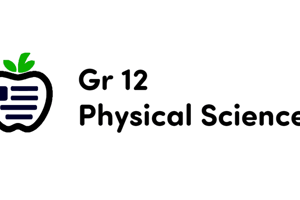Podcast
Questions and Answers
A box rests on a table. Which of the following statements accurately describes the relationship between the weight of the box and the normal force exerted by the table?
A box rests on a table. Which of the following statements accurately describes the relationship between the weight of the box and the normal force exerted by the table?
- The weight of the box is the action force, and the reaction force acts on the Earth. (correct)
- The normal force is solely dependent on the surface area of the table and independent of the box's weight.
- The weight and normal force are action-reaction pairs according to Newton's 3rd Law.
- The weight and normal force are equal in magnitude and act on the same object, thus always canceling each other out.
An astronaut in deep space (far from any planet or star) throws a ball. According to Newton's Laws, what will happen?
An astronaut in deep space (far from any planet or star) throws a ball. According to Newton's Laws, what will happen?
- The ball will move at a constant velocity forever, and the astronaut will remain stationary.
- The ball will move at a constant velocity, and the astronaut will move in the opposite direction. (correct)
- The ball will initially move, but gradually slow down and stop due to the absence of external forces.
- The ball will accelerate continuously, and the astronaut will remain stationary.
A car accelerates from rest to 20 m/s in 5 seconds. If the net force acting on the car remains constant, how would tripling the mass of the car affect its acceleration?
A car accelerates from rest to 20 m/s in 5 seconds. If the net force acting on the car remains constant, how would tripling the mass of the car affect its acceleration?
- The acceleration would remain the same.
- The acceleration would decrease to one-third of its original value. (correct)
- The acceleration would increase by a factor of three.
- The acceleration would increase by a factor of nine.
Two objects, one with a mass of 5 kg and another with a mass of 10 kg, are dropped simultaneously from the same height in a vacuum (no air resistance). Which of the following statements is true?
Two objects, one with a mass of 5 kg and another with a mass of 10 kg, are dropped simultaneously from the same height in a vacuum (no air resistance). Which of the following statements is true?
A person pushes a heavy box across a rough floor at a constant speed. Which of the following statements best describes the forces acting on the box?
A person pushes a heavy box across a rough floor at a constant speed. Which of the following statements best describes the forces acting on the box?
Flashcards
What is Mass?
What is Mass?
A quantitative measure of an object’s resistance to changes in its velocity.
What is Weight?
What is Weight?
The force of gravitational attraction that an object experiences.
Kilogram (kg)
Kilogram (kg)
The SI unit of mass.
Newton's 3rd Law
Newton's 3rd Law
Signup and view all the flashcards
Action-Reaction Forces
Action-Reaction Forces
Signup and view all the flashcards
Study Notes
Mass
- Mass is a quantitative measure of an object’s resistance to changes in its velocity.
- The SI unit of mass is the kilogram, which is about the mass of a hardcover book.
- Mass is essentially defined by Newton’s 2nd Law (F=ma).
Weight
- Weight is the force of gravitational attraction that an object experiences.
- As with any force, weight is measured in Newtons (SI). The English unit is pounds.
- Newton’s 2nd Law can be used to find the weight of an object near the Earth’s surface; a=g.
- W=mg.
Newton’s 3rd Law
- When an object exerts a force on a second object, the second object exerts a force of equal magnitude but opposite direction on the first object.
- Forces are always exerted on objects by other objects.
- An object cannot exert a force on itself.
- Forces always occur in pairs.
- Action-reaction forces act on different objects, so they cannot cancel one another.
Studying That Suits You
Use AI to generate personalized quizzes and flashcards to suit your learning preferences.




